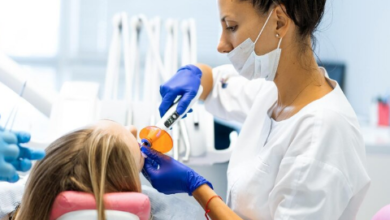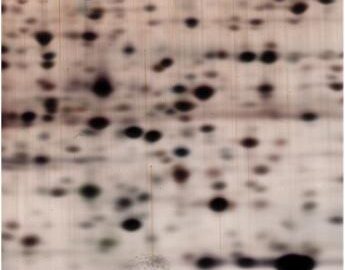Sun Spots vs Freckles: What You Need to Know for Healthy Skin

Understanding the difference between sun spots vs freckles is essential for maintaining healthy skin. Both conditions are common and often caused by sun exposure, but they have different characteristics and require different approaches for prevention and treatment. This article will provide a comprehensive overview of sun spots and freckles, helping you recognize, prevent, and treat these skin conditions effectively.
1. Causes
Causes of Freckles
Freckles, also known as ephelides, are small, flat, brown spots that typically appear on sun-exposed areas of the skin. They are more common in individuals with fair skin and red or blonde hair. The primary causes of freckles are:
- Genetic Factors: Freckles are often hereditary. If your parents have freckles, you are more likely to develop them.
- Sun Exposure: Ultraviolet (UV) radiation from the sun stimulates the production of melanin, the pigment responsible for skin color. This increased melanin production leads to the formation of freckles.
Causes of Sun Spots
Sun spots, also known as solar lentigines or age spots, are larger, flat, brown, or black spots that appear on the skin due to prolonged sun exposure. Unlike freckles, sun spots are not hereditary and are more common in older individuals. The primary causes of sunspots are:
- Sun Exposure: Chronic exposure to UV radiation causes sunspots to develop. The UV rays penetrate the skin and trigger an overproduction of melanin.
- Aging: As we age, our skin becomes more susceptible to the effects of UV radiation, making sun spots more common in older adults.
2. Appearance
How Freckles Look
- Color: Freckles are typically light brown to dark brown. They can become darker with increased sun exposure.
- Shape and Size: Freckles are usually small, about the size of a pinhead. They have a flat, round shape.
- Location on the Body: Freckles commonly appear on sun-exposed areas such as the face, shoulders, arms, and upper chest.
How Sun Spots Look
- Color: Sun spots are usually darker than freckles, ranging from light brown to black.
- Shape and Size: Sunspots are larger than freckles and can vary in size from a few millimeters to several centimeters. They have a flat, irregular shape.
- Location on the Body: Sunspots typically appear on areas frequently exposed to the sun, such as the face, hands, arms, and upper back.
3. Risk Factors
Risk Factors for Freckles
- Skin Type: Individuals with fair skin are more prone to developing freckles due to lower levels of melanin in their skin.
- Sun Exposure Habits: Frequent and prolonged sun exposure increases the likelihood of developing freckles. Those who spend a lot of time outdoors without adequate sun protection are at higher risk.
Risk Factors for Sun Spots
- Age: Sun spots are more common in older adults due to cumulative sun exposure over the years.
- Skin Type: Individuals with fair skin are more likely to develop sun spots, although they can occur in people of all skin types.
- Sun Exposure Habits: Like freckles, sun spots are more likely to develop in those who have had extensive sun exposure without proper protection.
4. Prevention
Preventing Freckles
- Sun Protection Strategies: To prevent freckles, it is crucial to protect your skin from the sun. This includes wearing sunscreen with a high SPF, wearing protective clothing such as hats and long sleeves, and seeking shade during peak sun hours.
- Skincare Routines: Incorporating products with ingredients like vitamin C, niacinamide, and antioxidants can help protect your skin from UV damage and reduce the appearance of freckles.
Preventing Sun Spots
- Sun Protection Strategies: Preventing sun spots also requires diligent sun protection. Use broad-spectrum sunscreen, wear protective clothing, and avoid sun exposure during peak hours.
- Skincare Routines: Using products with ingredients like retinoids, vitamin C, and antioxidants can help prevent and reduce the appearance of sunspots. Regular exfoliation can also help maintain an even skin tone.
5. Treatment Options
Treatment for Freckles
- Natural Remedies: Lemon juice, honey, and aloe vera are popular natural remedies for lightening freckles. These ingredients have mild bleaching properties that can help reduce the appearance of freckles over time.
- Dermatological Treatments: Dermatological treatments for freckles include chemical peels, laser therapy, and cryotherapy. These treatments can effectively reduce the appearance of freckles by removing the top layer of skin or targeting melanin-producing cells.
Treatment for Sun Spots
- Over-the-counter Treatments: Over-the-counter treatments for sun spots include creams and serums containing ingredients like hydroquinone, retinoids, and alpha hydroxy acids. These products can help lighten sun spots and improve skin texture.
- Dermatological Treatments: Dermatological treatments for sun spots include chemical peels, laser therapy, and cryotherapy. These treatments can effectively reduce the appearance of sunspots by removing the top layer of skin or targeting melanin-producing cells. It is important to consult a dermatologist before using any lightening creams. An alternative is to use natural dark spot eraser cream with Jamaica’s mineral-rich botanicals to give you overall healthy and radiant skin.
6. When to See a Doctor
While freckles and sun spots are generally harmless, there are times when you should consult a dermatologist:
- Changes in Appearance: If you notice changes in the size, shape, or color of a freckle or sun spot, it is essential to get it checked by a doctor. These changes could indicate skin cancer.
- New Growths: If new growths appear on your skin and do not resemble typical freckles or sun spots, it is advisable to have them evaluated by a dermatologist.
- Regular Skin Check-ups: Regular skin check-ups are important for early detection of skin cancer and other skin conditions. If you have a history of extensive sun exposure or a family history of skin cancer, it is especially important to have routine skin exams. For additional skin care, visit the Villiers Valley website to use natural dark spot eraser cream with Jamaica’s mineral-rich botanicals to give you overall healthy and radiant skin.
7. Myths and Facts
Common Myths about Freckles and Sun Spots
- Myth: Freckles and sunspots are the same.
- Fact: While both are caused by sun exposure, freckles and sun spots are different in appearance, causes, and treatments.
- Myth: Only fair-skinned people get freckles and sun spots.
- Fact: While fair-skinned individuals are more prone to freckles and sun spots, people of all skin types can develop them.
- Myth: Sunspots are always a sign of skin cancer.
- Fact: Sunspots are generally harmless and are not a sign of skin cancer. However, any changes in their appearance should be evaluated by a dermatologist.
Facts to Dispel Misconceptions
- Freckles are not harmful. They are a cosmetic concern and do not pose any health risks.
- Sun spots can be treated. There are various treatments available to lighten or remove sun spots, making them less noticeable.
- Sun protection is crucial. Using sunscreen and protective clothing can significantly reduce the risk of developing freckles and sunspots.
8. Lifestyle and Skincare Tips
Daily Skincare Routines
- Cleansing: Use a gentle cleanser to remove dirt and impurities without stripping your skin of natural oils.
- Moisturizing: Keep your skin hydrated with a good moisturizer suitable for your skin type.
- Sun Protection: Apply a broad-spectrum sunscreen with at least SPF 30 daily, even on cloudy days. Reapply every two hours when outdoors.
Healthy Lifestyle Choices for Skin Health
- Diet: Eat a balanced diet rich in fruits, vegetables, and antioxidants to support healthy skin.
- Hydration: Drink plenty of water to keep your skin hydrated from the inside out.
- Avoid Smoking: Smoking can accelerate skin aging and increase the risk of developing sun spots.
- Regular Exercise: Exercise improves blood circulation, which can help maintain healthy skin.
9. Conclusion
In conclusion, understanding the differences between sun spots and freckles is essential for maintaining healthy skin. Both conditions are primarily caused by sun exposure but differ in their appearance, causes, and treatments.







